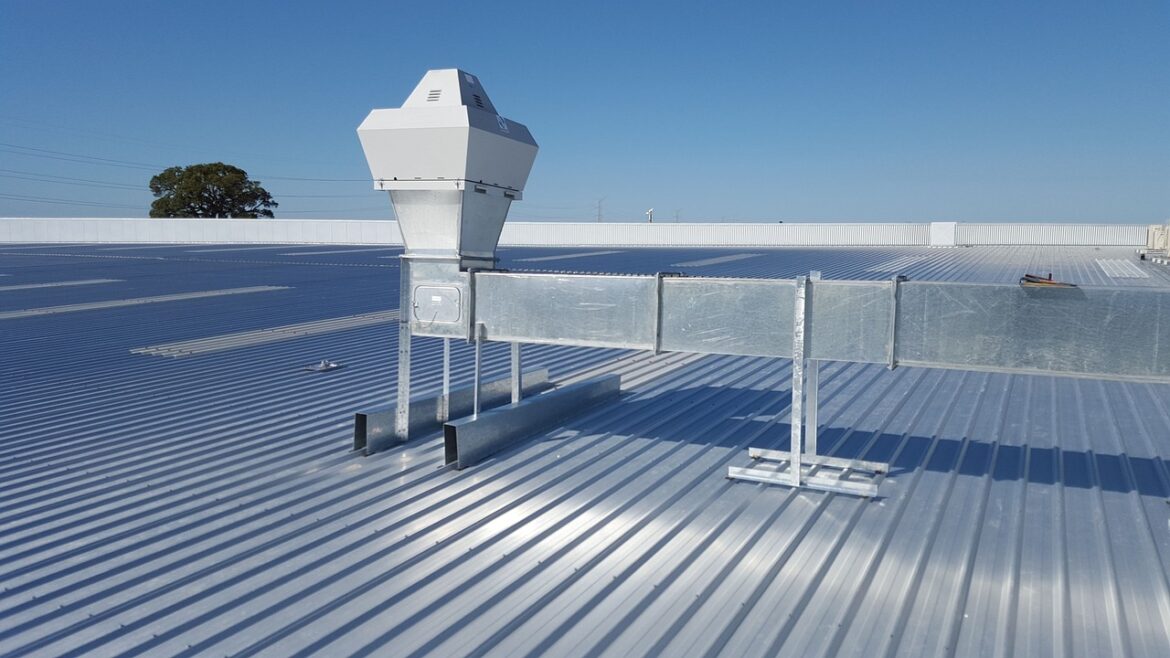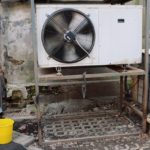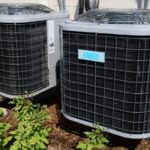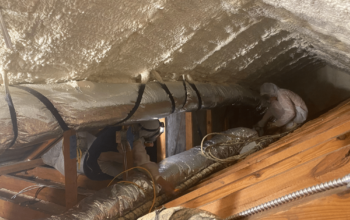The heating and ventilation system, commonly known as HVAC, is an integral part of residential and commercial structures to achieve interior thermal comfort.
Gaining increased popularity in new constructions, HVAC systems use fresh air from the environment to provide healthy indoor air quality. Besides improving the air quality by circulating pressure, it also removes moisture, dust, carbon dioxide, and other air pollutants.
A correctly functioning HVAC system will consistently replenish oxygen while maintaining a comfortable temperature. When it comes to eco-friendly and energy-efficient HVAC systems, geothermal HVAC systems offer a potentially promising and increasingly popular option. Want to know about professional heating and cooling services? Read more here.
What is geothermal HVAC?
Geothermal heating and cooling systems are considered energy-efficient HVAC systems that leverage renewable energy sources to generate heat and induce cooling.
A geothermal HVAC system utilizes natural stable underground earth temperature to warm homes by generating heat in the winter and keep them cool in the hot season by circulating cool air.
These systems encompass three essential components:
- Air handling system: responsible for transferring the air
- Groundwater heat exchanger: responsible for collecting heat from the earth or transferring heat back into the ground
- Geothermal loop: Responsible for facilitating heat movement between the first two components (air handling system and the groundwater exchanger).
Wondering what happens in regions experiencing extreme climatic conditions? Even when some parts of the country have extreme climatic conditions, temperatures below the frost line remain steady.
By switching from a conventional electric-powered HVAC system to an energy-efficient geothermal heating system, you can expect to save up to 80% every year on artificial heating and cooling and hot water.
How exactly does a geothermal heating and cooling system work? Let’s find out!
Geothermal heating and cooling: the working mechanism
The geothermal system requires professional installation for successful and error-free operation.
- Generally, the heat pump of the geothermal HVAC system is installed in the basement or garage.
- The heat pump is responsible for circulating liquid through pipes installed 300-600 feet deep underground.
- At this level, the temperature remains at a constant 55F throughout the year.
- These deep-seated underground pipes are sometimes referred to as “loops” due to their physical structure.
- They absorb the heat distributed into the earth from natural solar heating
- The liquid in the loops returns to the geothermal heat pump, which heats or cools the interior of a home or office.
Heating during winter
- Liquid circulating in the loop gets heated through heat transfer from underground natural stored heat.
- The liquid then circulates back to the indoor heat pump.
- The heat gets extracted from the liquid and supplied to the indoors to maintain a comfortable temperature.
- The liquid then returns to the loop and again collects heat energy to provide continuous heating.
Cooling during summer
- The indoor heat pump extracts heat from the air inside your home and transmits it to the fluid circulating in the loop to the ground.
- Since the underground temperature is lower (55F), heat disbands from the circulation fluid to the earth.
- The cooling you experience results from extracting and eliminating heat from the circulated air. This is transferred back to the earth, and continuously circulating cool air back to your home.
Facts about geothermal HVAC system
- The working mechanism of a geothermal heating and cooling system eliminates the requirement for fossil fuel for operation. The system only uses one unit of electricity to generate four units of heat, making the entire artificial heating and cooling process environmentally friendly.
- The United States Environmental Protection Agency (EPA) recognizes geothermal HVAC systems as an underutilized clean, eco-friendly, and renewable energy source.
- The cost for installing a geothermal heating and cooling system is $30000. However, you can receive a payback as energy cost savings within ten years.
Benefits of installing a geothermal HVAC system
Every year in the US, heating and cooling system service and repairs lead to $14 billion in expenditure. In fact, these systems contribute to almost half of residential energy consumption. Therefore, people are looking for energy-efficient and high-performance HVAC systems to manage energy costs and reduce environmental impact.
Geothermal HVAC systems are gaining huge popularity due to their impressive benefits.
Eco-friendly alternative
Since geothermal mechanisms don’t operate using any fossil fuel, they don’t produce any carbon monoxide or other greenhouse gasses. Greenhouse gases are greatly responsible for global warming and air pollution.
Affordable operation
As mentioned earlier, a geothermal HVAC system generates four units of heat using only a single unit of electricity, thus offering a 400 percent efficiency rating.
These efficient systems simply transfer heat since they extract stored energy from the earth resulting in up to 70-80 percent on utility bills.
Get entitled to the federal tax credit
An amazing benefit of installing a geothermal heating and cooling system is getting entitled or becoming eligible to receive geothermal tax credits.
This is basically a component of the federal tax credit for renewable energy systems. According to ENERGY STAR, geothermal HVAC systems installed through Dec. 31, 2022, are eligible for a 26% tax credit. The rate drops to 22% for the next tax year, starting from Jan. 1, 2023, to Dec. 31, 2023.
Lower maintenance costs
Conventional HVAC systems have an average lifespan of 10 years to 15 years, given you’re performing regular maintenance.
Geothermal HVAC systems are not directly located outdoors. Therefore, the installed components are not subject to weather-related wear and tear.
- The indoor components encompass a fan, compressor, and pump, which generally have a longevity of decades.
- The earth loop remains buried deep under the ground and has the capability to last for several generations.
What’s more? Generally, the underground ground loop or geothermal pipes comes with a 50-year warranty. Moreover, geothermal systems also require little to no maintenance apart from periodic filter replacements and annual professional inspections.
Conclusion
To enjoy the benefits of an energy-efficient and eco-friendly heating and cooling system, connect with a local, professional HVAC service provider today!
Related Posts












